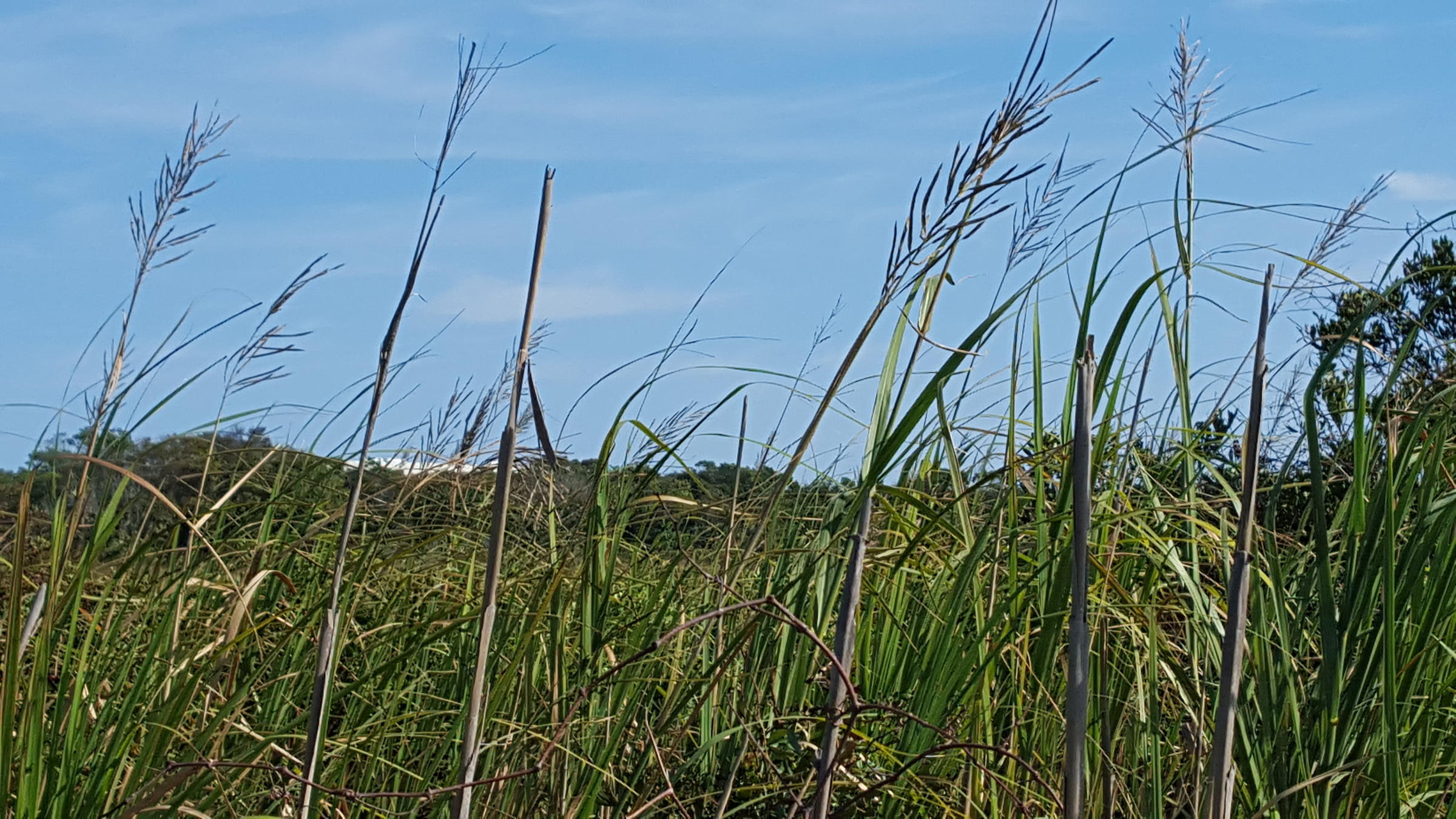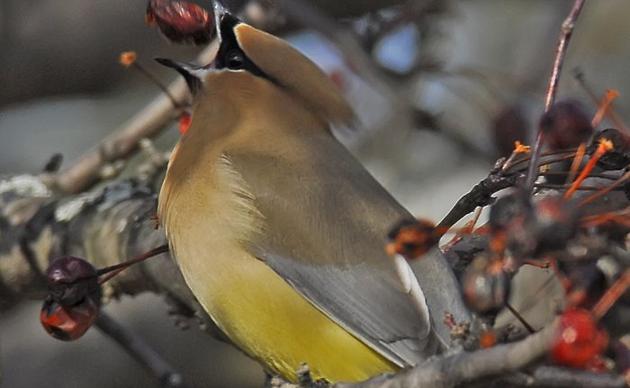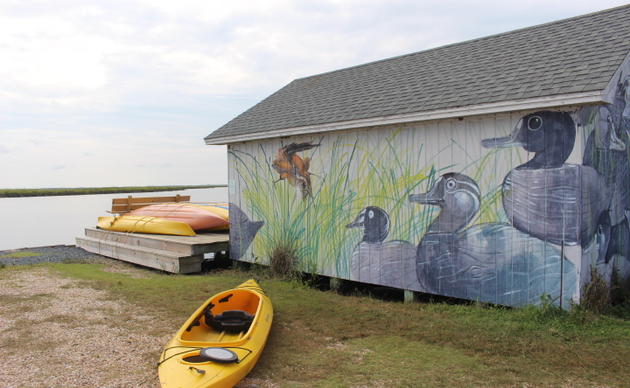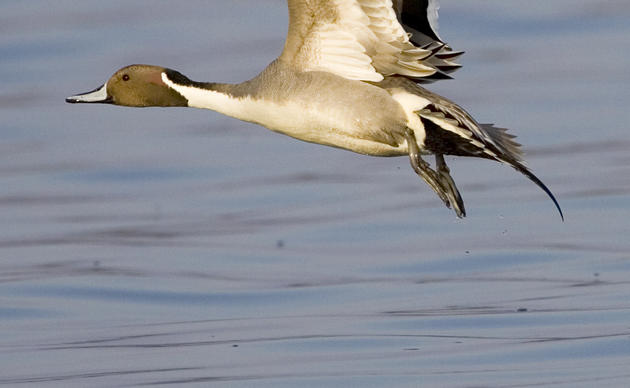Tidal Freshwater Marsh (Giant Cordgrass Subtype): Extensive marshes are present on a complex of islands on the sound side of the site. This presumably is a relict tidal delta left by some past inlet. The marsh complex is a mosaic consisting primarily of the Giant Cordgrass Subtype and Needlerush Subtype, with small patches of the Cattail Subtype. No other subtypes were seen. The pattern of subtypes is intriguing. In the northeastern part of the marsh complex, Giant Cordgrass Subtype covered sizeable patches, and was the most extensive. The Needlerush Subtype was sometimes present as a narrow fringe along the water. Westward and southward in the site, the Giant Cordgrass Subtype becomes more often confined to a fringe on the edges of islands, 5-30 meters wide. The interior of those islands is extensive beds of the Needlerush Subtype. The Cattail Subtype is present only as a few small patches, on the edges of islands in the southern part of the site.
The Giant Cordgrass Subtype is dominated by Sporobolus (Spartina) cynosuroides, with minor amounts of Juncus roemerianus, Typha latifolia, Sagittaria lancifolia var. meadia, and Panicum virgatum var. cubense. Other species include Pluchea foetida, Hydrocotyle umbellata or verticillara, Galium bermudense, Oxypolis rigidior, Symphyotrichum subulatum, and Schoenoplectus pungens. The marshes appear to be largely unaltered, though a number of abandoned duck blinds are present along their edges. Phragmites australis patches are widely scattered, representing little current damage by the invasion but a potential for more serious invasion.
Tidal Freshwater Marsh (Needlerush Subtype): As noted above, the Needlerush Subtype is extensive in the interior of islands in the southern part of the site, and is present as small patches and narrow fringes in the northern part. Juncus roemerianus strongly dominates, though minor amounts of Sporobolus cynosuroides, Typha latifolia, and locally, Cladium jamaicense, are often present. Other species include Symphyotrichum subulatum, Solidago sempervirens, and Persicaria sp.
Tidal Freshwater Marsh (Cattail Subtype): Occurs as only few small patches of dominance, though the species is scattered in other marsh communities. Typha latifolia dominates. No other species were noted, other than minority Juncus roemerianus and Sporobolus cynosuroides, and some Pluchea foetida and Symphyotrichum subulatum. As with the rest of the marshes, no artificial disturbance were noted in this community.
Marsh Ecotone: A narrow band of distinctive vegetation sometimes occurred at the transition between the marshes and the forests on the Currituck Banks. There is not a recognized natural community type that it corresponds to, but a number of species occurred only in it or primarily in it: Baccharis halimifolia, Decodon verticillatus, Hibiscus moscheutos, Ampelopsis arborea, Setaria parva, and Solidago altissima/carolinensis. Morella cerifera and Sporobolus cynosuroides were abundant in it. This distinctive vegetation zone may warrant consideration of recognition as a community type or subtype, but it may not ever be extensive enough to recognize.
From the Site Survey report conducted by:
Michael P. Schafale, Ecologist
Natural Heritage Program
Division of Land and Water Stewardship
North Carolina Department of Natural and Cultural Resources
How you can help, right now
Stay in Touch with Pine Island
Learn about the bird conservation research taking place at Pine Island and find nature-focused events happening at this Important Bird Area along the Outer Banks in our periodic eBulletin.
Kayak Sign-up
Click Orange Button to register for Guided Kayak Programs
Protect the Sanctuary
Every donation will be used to protect the 6,000 acres of marsh complex within the sanctuary and the wildlife it supports.




